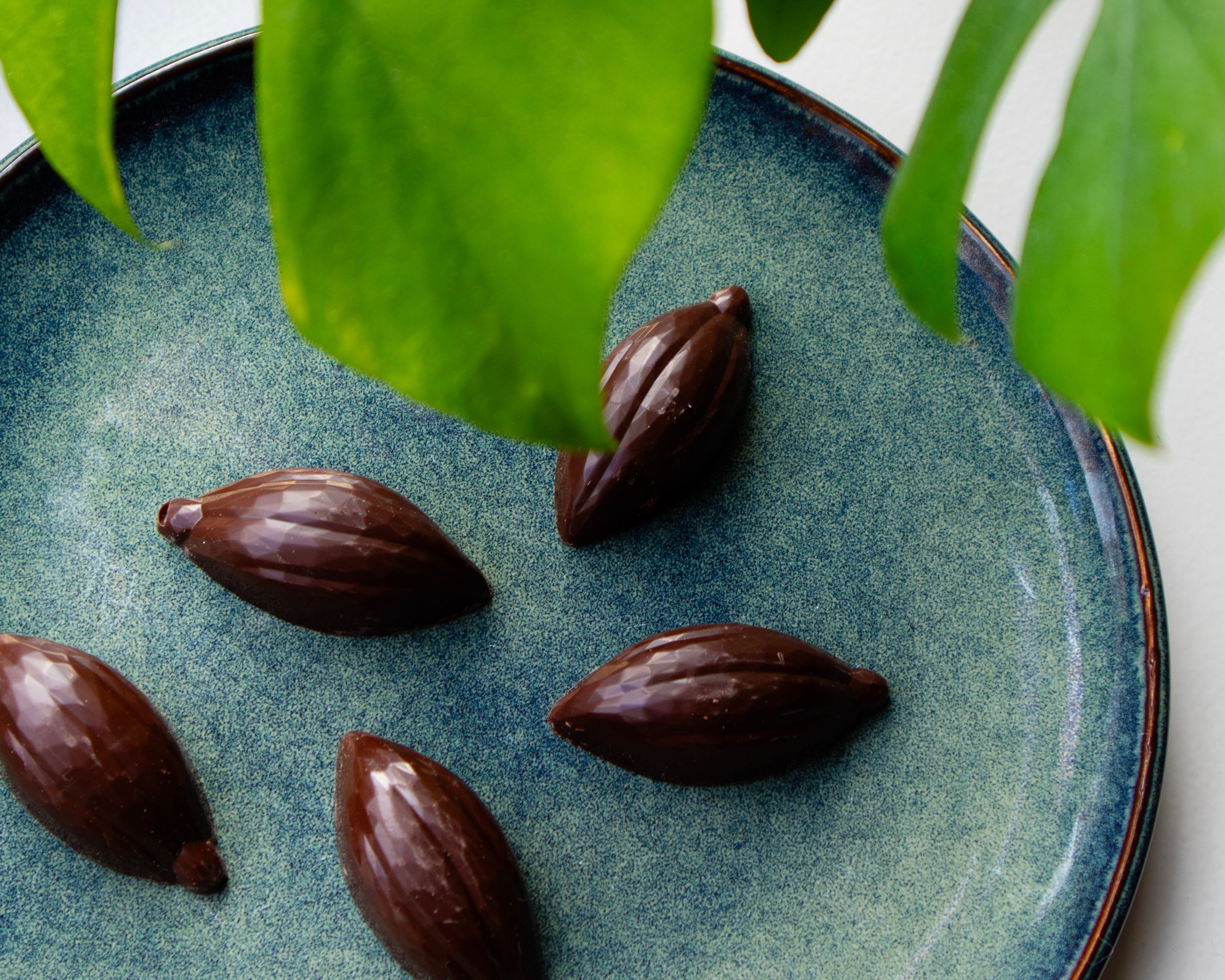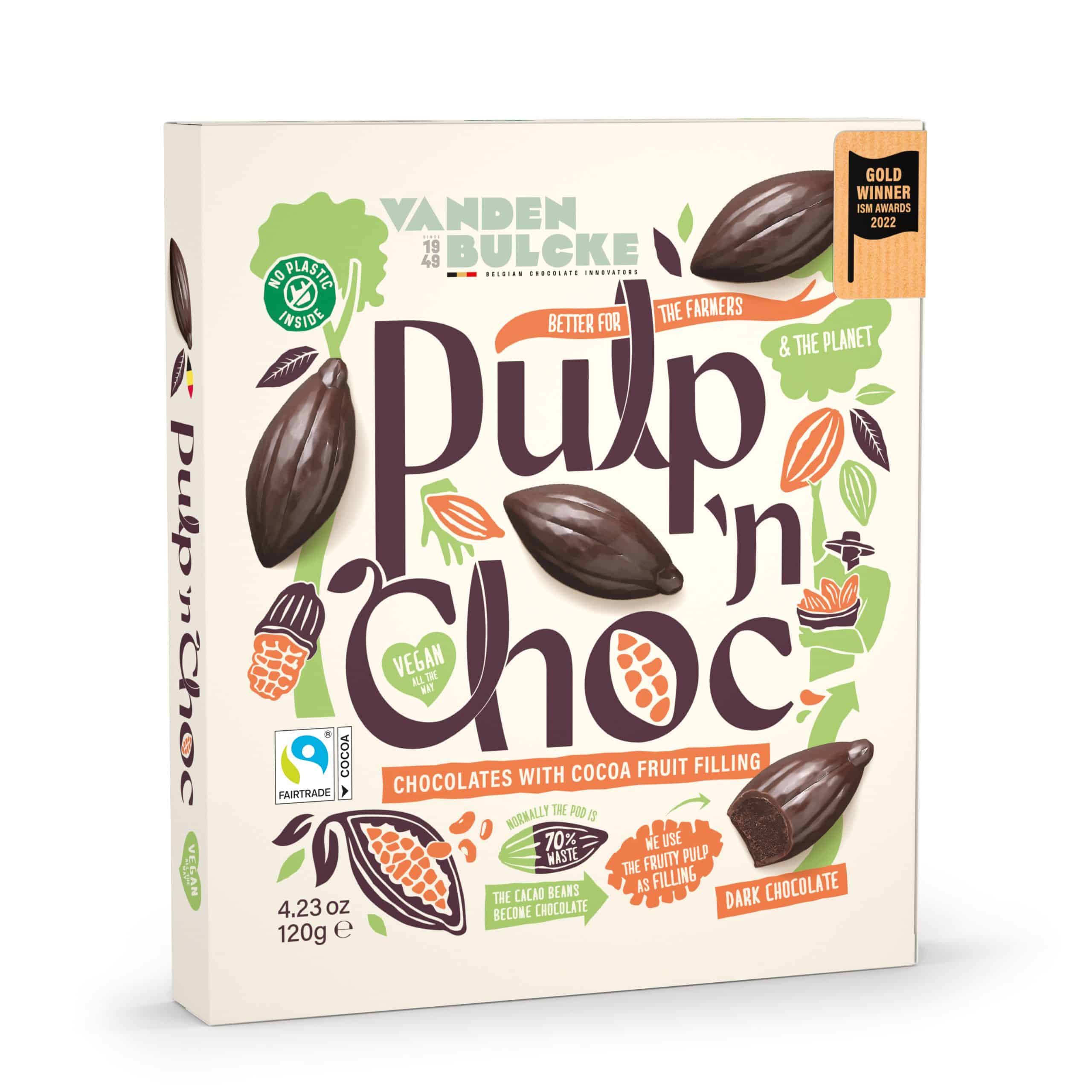Reinventing chocolate? Chocolatier Vandenbulcke does it with waste streams from cacao fruit. With Pulp ‘n Choc Fruity Mix they make a praline from the white pulp surrounding the cacao bean: the pulp normally left behind on the field. It gets a second life here as a fresh fruit filling. Good for the taste and for the income of cacao farmers, who receive a fee for it.
Pulp non-Fiction: valorisation at its finest
Up to 70% of the cocoa fruit remains unused after harvest. Vandenbulcke chooses to valorise these waste streams as the base for three fruity fillings: strawberry, lemon, and orange. In doing so, it contributes to a goal of Fevia’s sustainability roadmap: 30% less food waste in the chain by 2030.

Chocolate with impact
For this combination of circular thinking, fair trade, and innovative flavours, Pulp ’n Choc was awarded silver at the international ISM trade fair in Cologne. Out of more than 100 entries, their praline was recognised for its innovative character. It’s not the first time: with the similar Cabosse-praline, Vandenbulcke previously won gold.
As an active member of Beyond Chocolate, the company contributes to building a sustainable chocolate supply chain, with the goal of ensuring a living income for 200,000 cocoa farmers worldwide by 2030. Already today, 94% of the chocolate sold by Belgian signatories is certified or covered by a company-owned sustainability programme.
Finally, the packaging of the Pulp ’n Choc Fruity Mix is fully recyclable: plastic has been replaced by sustainable paper. With innovations like Pulp ’n Choc, Vandenbulcke proves that Belgian chocolate is not only of top quality but can also play a role in making the global food chain more sustainable.
 |
 |
From bean to sensation
Sustainable production starts with transparency. Those who want to discover the production process for themselves can visit The Chocolate Trail in Kortrijk. This brand-new interactive chocolate walk - de first in Belgium with a focus on sustainability- shows the journey from bean to praline. Visitors learn how Vandenbulcke works with waste streams, faire trade raw materials, and recyclable packaging.

